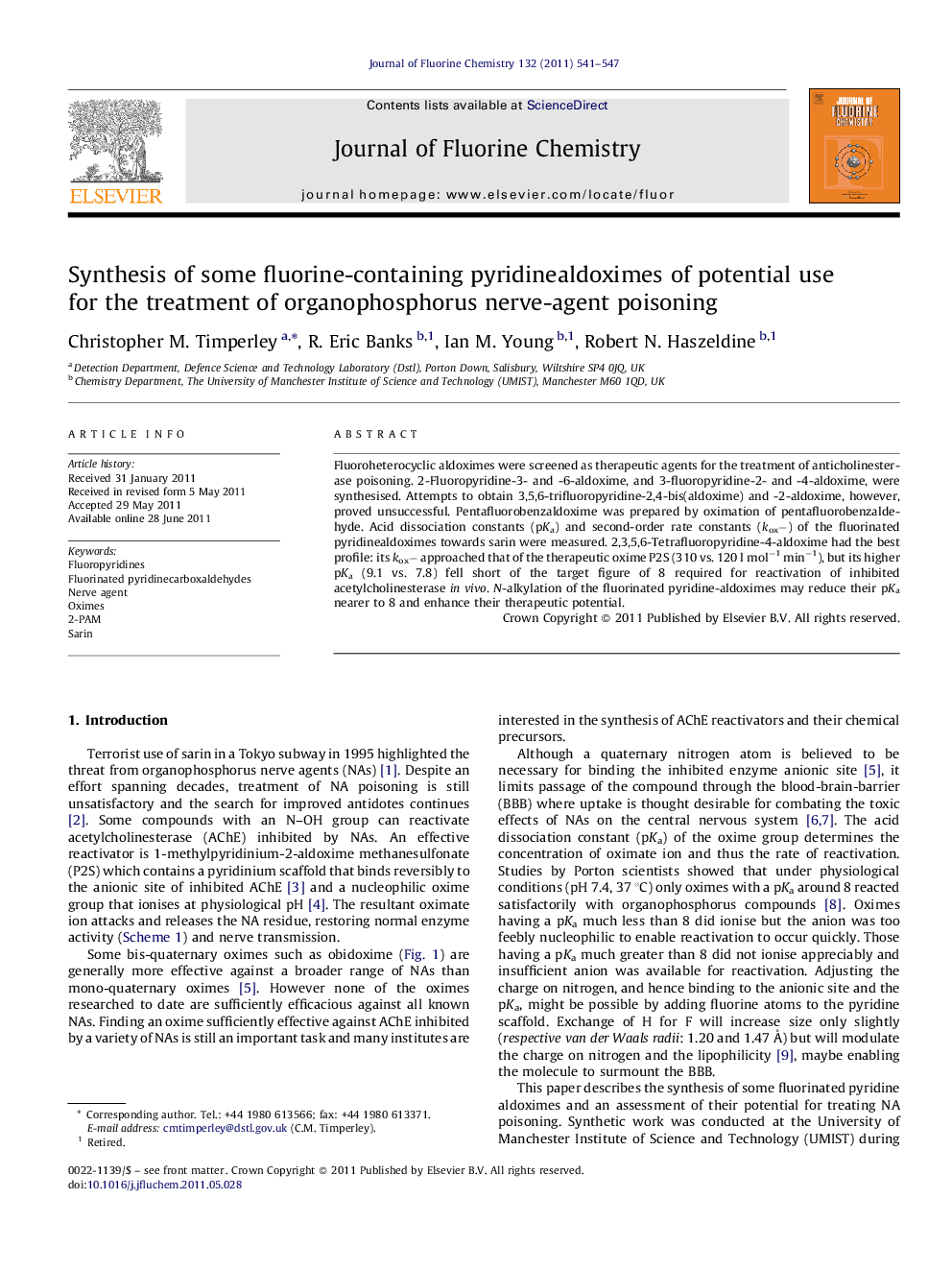| Article ID | Journal | Published Year | Pages | File Type |
|---|---|---|---|---|
| 1314574 | Journal of Fluorine Chemistry | 2011 | 7 Pages |
Fluoroheterocyclic aldoximes were screened as therapeutic agents for the treatment of anticholinesterase poisoning. 2-Fluoropyridine-3- and -6-aldoxime, and 3-fluoropyridine-2- and -4-aldoxime, were synthesised. Attempts to obtain 3,5,6-trifluoropyridine-2,4-bis(aldoxime) and -2-aldoxime, however, proved unsuccessful. Pentafluorobenzaldoxime was prepared by oximation of pentafluorobenzaldehyde. Acid dissociation constants (pKa) and second-order rate constants (kox−) of the fluorinated pyridinealdoximes towards sarin were measured. 2,3,5,6-Tetrafluoropyridine-4-aldoxime had the best profile: its kox− approached that of the therapeutic oxime P2S (310 vs. 120 l mol−1 min−1), but its higher pKa (9.1 vs. 7.8) fell short of the target figure of 8 required for reactivation of inhibited acetylcholinesterase in vivo. N-alkylation of the fluorinated pyridine-aldoximes may reduce their pKa nearer to 8 and enhance their therapeutic potential.
Graphical abstractAcid dissociation constants (pKa) and second-order rate constants towards sarin (kox− were compared to those of the oxime P2S.Figure optionsDownload full-size imageDownload as PowerPoint slideHighlights► 2-Fluoropyridine-3- and -6-aldoxime, 3-fluoropyridine-2- and -4-aldoxime, isolated. ► pKa and second-order rate constants towards sarin measured. ► 2,3,5,6-Tetrafluoropyridine-4-aldoxime had the best profile. ► N-alkylation may reduce pKa nearer to 8 and enhance therapeutic potential.
